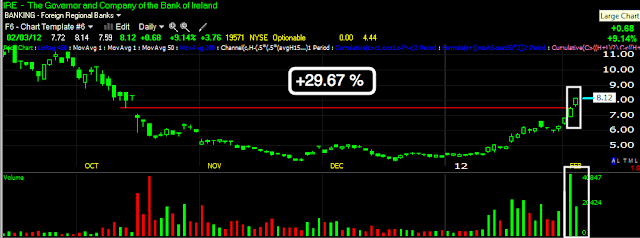The bast description of the Euro-zone out of Davos was that of, "A slow motion train wreck". Not only does this describe the immensity of the ordeal (look at the world financial global ramifications of Lehman and now imagine instead of a company, it's a country), but it also implies that we all know what the outcome of a train-wreck will be, in so far as to say, horrific.
As I made mention earlier in the week when the market took off on Wednesday from a bogus rumor about a Greek deal being done in hours (which we have hear dozens of times, this time the market acted out of character), when in fact we already knew from the day before that Greece and the Troika had reached an impasse which was forcing the Greek PM to schedule an emergency meeting as soon as Thursday. That meeting came today as mentioned in an earlier post, in which the new G-Pap threatened to resign if he could not get all 3 Greek political parties on board to cave in to the Troika's demands so Greece wouldn't become the first developed nation in 65 years to default. It should be noted that in this new age of globalization, there is no historical precedent for such an event.
It seems that PM Papademos may have to resign as the meeting today didn't go too well.
The FT reported
Greece’s leaders oppose new austerity measures
All three party leaders in Greece’s teetering national unity government have opposed new austerity measures demanded by international lenders, forcing eurozone finance ministers to postpone approval of a new €130bn bail-out and moving the country closer to a full-blown default.
The further austerity cuts demanded by the Troika for them to consider the next tranche of bailout money that Greece needs in order to not default in March, have been rejected.
The Greeks did make a counter proposal that the Troika has rejected.
I was going to write last night about the rift between Germany and France as Mer-Kozy are no longer very cozy with the French President opposing the German plan to have the EU administer Greek Finances. Along those lines, the meeting set up by what is essentially the new Troika, included Germany, the Netherlands, Finland and Luxembourg, notably absent was Sarkozy's invitation.
As things stand as of this moment, if the new bailout is not approved in a matter of days, Greece WILL default and I don't think there have been too many EU summits on making that an orderly default.
With each side now firmly dug in and refusing the other's demands, it seems that the slow motion train-wreck is about to make impact.
While Credit, as shown in an earlier chart today makes a run for the hills, equities march on as nothing bad can possibly happen. However the underlying tone has been some of the worst I have seen, which implies that the equity market does know what's about to come and they are using this time to take full advantage of it.
As I have relayed to a few of you, I use to get trading research papers from a well known large Wall Street investment bank via a person close to me working there. I thought they would provide a huge edge, but nothing in the papers made any sense, the investments they were buying or selling were not moving and I chalked them up as useless until I stumbled upon them a few months later, then everything made sense. The point being, Wall Street works a lot further in advance then you would imagine.











































